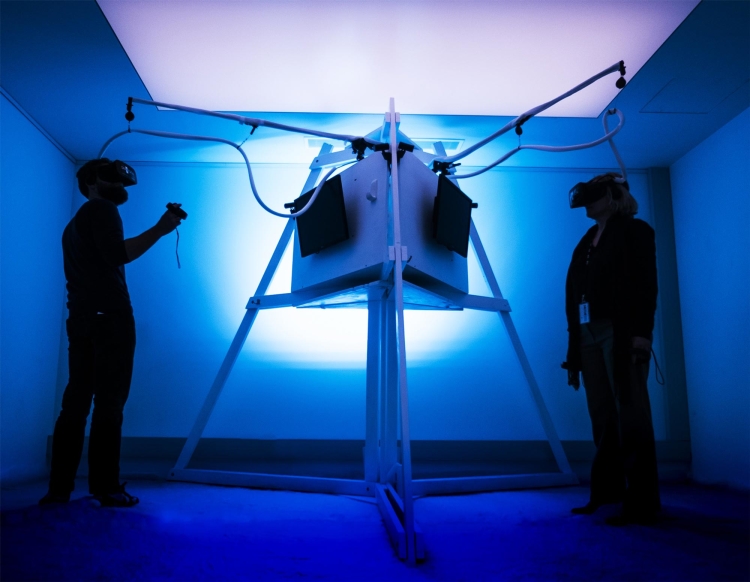In the past six decades, a number of immersive technologies have come into existence, bringing us hours of joy and exploration. These innovations engage us in new experiences through artificially enhanced environments widely-known as virtual reality (VR). Many would argue that these virtual landscapes blur our own understanding of physical space, ultimately leading to confusion about the definition of reality itself. The confusion is further compounded by industry leaders and academics vying to define the 3D and immersive components experienced in headsets, computers, and mobile phones. You might have heard about these new realities, from virtual to augmented (AR), and everything in between. Now, the vocabulary is expanding to the point that some might shrug it away and say, “What’s the difference?”
The State of Reality: Part I, A Brief History of Augmented and Virtual Reality
This two-part blog series is meant to help you navigate the confusion and provide you with a brief history of AR/VR (Part I), and a glossary of immersive tech terms (Part II) to survive the inner turmoil you might experience as you make sense of the AR/VR landscapes.
The Filmmaker and Father of Virtual Reality
The AR/VR space has an interesting and complex story. The chipping away of reality was first sparked by a filmmaker in the 1950s. Ironically, Morton Heilig was neither an engineer nor a computer scientist. He was a cinematographer in the Hollywood motion picture industry who dreamed of finding a way for people to feel as though they were inside a movie. Tinkering, as inventors do, he fashioned together a viewing apparatus that displayed 3-D video, which back then entailed mounting multiple 35 mm cameras onto a cameraman. Wildly excited about the possibilities, Morton once proclaimed,
"I thought, Why stop at a picture that fills only 18 percent of the spectator's visual field...Why not make it a three-dimensional image that fills 100 percent of the spectator's visual field, accompanied by stereophonic sound? If we're going to step through the window into another world, why not go the whole way?”
Heilig plugged away at his vision and ultimately created an immersive, multi-sensory experience in a large mechanical device known as the Sensorama. A viewer could hop in and feel as though they are riding a motorcycle through the city, complete with a vibrating seat, and the scent of gasoline. Through his efforts, Morton Heilig would later become, “The Father of Virtual Reality.”
A History of Wearables
Since then, others have taken on the immersive mission past Heilig’s dream of an experiential theater machine into interactive experiences with wearable devices. Heilig first invented a Telesphere Mask, and this foundational work was extended by experiments in headset technology at MIT. In the 1960s, Ivan Sutherland and his MIT colleagues built a head-mounted (HMD) display called, “The Sword of Damocles.” The clunky HMD was meant to be a window to a virtual world, yet it had primitive graphics, while overall being impractical for mass production.
Ivan Sutherland and The Sword of Damocles
Around the 1970s and 80s, optical and haptic feedback developments in technology progressed to permit a person to move in virtual space. The additional improvement of 3-D computer graphics during that time period enabled NASA’s Ames researchers to build the Virtual Interface Environment Workstation (VIEW), a head-mounted display that relayed artificial and real environments from remote video cameras. VIEW came equipped with a data suit and gloves, composed of fiber optic cables and sensors, that prompt the detection of hand movements so that the user could interact with the computer-generated environments.
The Beginning of Virtual and Augmented Reality
It really wasn’t until 1989 when an agreed-upon term was adopted to describe the computer-generated environments being produced. Jaron Lanier, CEO of VPI Research Inc., created goggles and gloves to interact with what he first coined as, “Virtual Reality.”
In the 90s, Thomas P. Caudell introduced the idea of a see-through, head-mounted display (HUDSET) to augment a factory worker’s real-world field of view with dynamically changing graphical information. His goal was to improve the accuracy of manufacturing processes through an augmented interface. Caudell further distinguished the application of HUDSET as a type of augmented reality, distinct from virtual reality because, “An AR system requires accurate registration with the physical world.”
Though Caudell first coined the AR term, the first true AR system was said to be invented by Louis Rosenberg in 1992 when he built Virtual Fixtures at the USAF Armstrong Labs. Virtual Fixtures employed unique binocular magnifiers and robot arms to test enhanced human performance in real-world dexterous tasks, such as training pilots in the Air Force and other departments in the military.
Immersive Technology in the Present Day
These days, the AR/VR experience runs the spectrum of technologies that “extend” reality, mainly leveraging the 360 space. For example, you can access 360 video very easily on YouTube, where a viewer can observe footage taken from the surrounding area of a camera’s physical position. VR takes it a step further by allowing users to interact with the 360 environment through a headset, giving you the capability to shut out physical reality and engage in virtual worlds. Currently, everyone has the opportunity to enjoy VR now that headsets, such as the Oculus Quest 2, have become more affordable.
There is also the modern-day take on AR, where graphical images can be presented as a digital overlay onto the real world. One familiar platform that captured worldwide attention was Pokemon GO where animated Pokemon can be caught in a user’s real environment with a mobile phone. Other examples include Instagram and Snapchat filters, as well as the IKEA app where consumers could virtually place furniture in their home using their mobile device.
The State of Reality
Presently, AR and VR have been thrown into the mix with terminology like mediated reality, mixed reality, extended reality, and X-reality –– just to name a few. Unfortunately, the new descriptors are devised from widely-varying perspectives. For example, industry leaders have staked a claim on the “reality space” by trademarking elements of their tech, much like Sony has done with “XR,” or Microsoft has done with “DirectReality.” Academics have argued to define immersive tech based on sensory perceptions and the quality of being in a “real place,” with the plausibility of illusion given to the user, while others have emphasized the need for simple definitions based on the degree the technology blurs the line between virtual and physical.
Essentially, the State of Reality has become a collection of words creating a mix of terms meant to define what is real, and what is virtual, and it continues to confuse the real world every day. As the technology for AR/VR advances, more and more definitions are likely to invade our reality.
Now that you’ve been officially briefed on the State of Reality, stay tuned for Part II of this blog series, where we explore the reality continuum, and also provide a reality check glossary.





